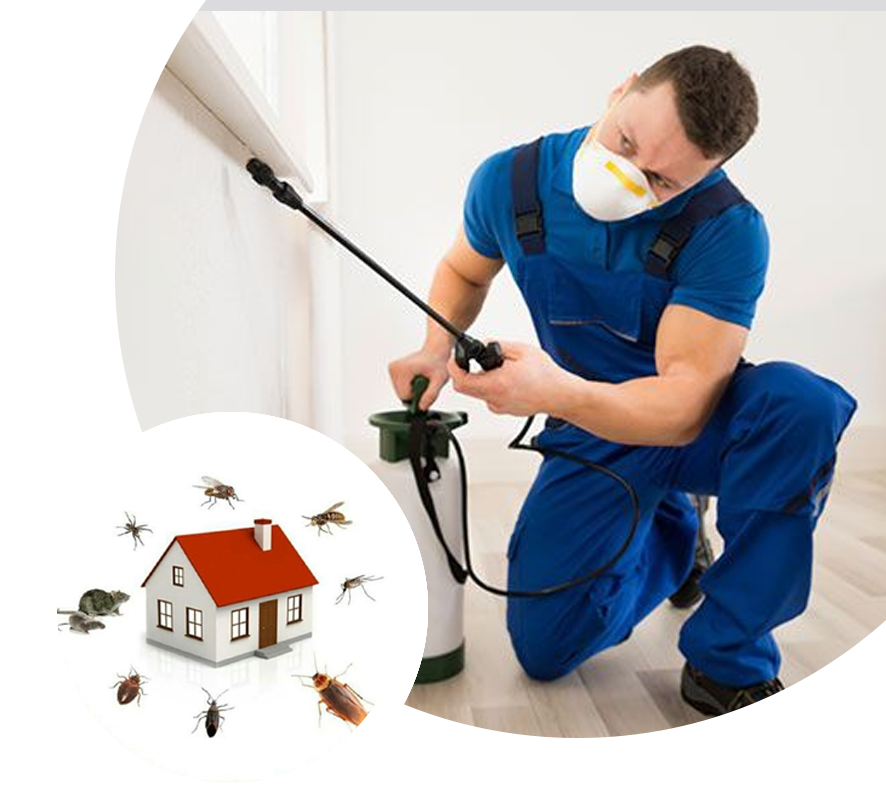Specialist Bed Bug Exterminator: Relax Easy Recognizing Your Home is Bug-Free!
Specialist Bed Bug Exterminator: Relax Easy Recognizing Your Home is Bug-Free!
Blog Article
Specialist Bug Control Techniques for Long-Term Outcomes
In the realm of insect control, achieving continual efficacy and lasting outcomes requires a thorough method that transcends mere elimination. Expert bug control techniques envelop a detailed strategy that starts with an extensive inspection and assessment, adhered to by accurate insect recognition to comprehend their actions patterns. The execution of Integrated Insect Management (IPM) concepts, coupled with eco-conscious therapies, develops the keystone of lasting insect eradication. Nevertheless, real test depends on the ongoing surveillance and maintenance of the treated areas, making sure a pest-free environment for the near future. By diving into the ins and outs of these methods, a much deeper understanding of professional insect control techniques for sustaining outcomes emerges.
Assessment and Analysis
Upon getting in a residential property for parasite control solutions, the first action is a detailed evaluation and evaluation to identify the extent of the infestation and determine the most reliable therapy plan. Expert insect control specialists are trained to carefully examine the properties, seeking indicators of bug activity such as droppings, munch marks, nests, or any structural damages. They will certainly likewise examine the conditions that may be bring in bugs, such as food sources, water leakages, or access points.

Parasite Identification and Behavior

Moreover, recognizing the actions of the recognized bug is key to executing efficient control steps. Knowing where parasites nest, what they feed on, and their task patterns can assist pest control professionals devise approaches to remove them effectively.
Integrated Pest Monitoring (IPM)
Integrated Insect Management (IPM) approaches combine numerous techniques to regulate and avoid pest problems in a sustainable and eco pleasant way. Pest control Washington DC. By integrating Click Here approaches such as organic control, environment control, modification of social techniques, and using resistant selections, IPM intends to lessen the usage of chemical pesticides
Among the vital concepts of IPM is the emphasis on avoidance. This aggressive strategy involves surveillance insect populations consistently to spot any type of possible issues before they intensify. By determining parasite problems early, pest control actions can be implemented swiftly and efficiently.
Additionally, IPM advertises making use of safe bug control methods whenever possible. This can include using all-natural killers of the parasites, presenting advantageous bugs, or utilizing pheromones to interrupt breeding patterns. By lowering dependence on chemical pesticides, IPM not just shields the setting yet additionally aids maintain an equilibrium in the ecological community.
Environmentally-Friendly Treatments
Implementing eco-conscious strategies in pest control treatments can effectively address problems while focusing on ecological sustainability. Environmentally-friendly treatments focus on minimizing the impact of parasite control approaches on ecological communities, non-target microorganisms, and human health and wellness. These techniques frequently involve using all-natural predators, such as ladybugs or nematodes, to control pest populations, lowering the requirement for chemical interventions. Additionally, strategies like environment manipulation, such as adjusting dampness degrees or removing food resources, can assist discourage pests without making use of dangerous compounds.
Another trick aspect of environmentally-friendly therapies is the use of natural and biodegradable items that break down swiftly without leaving hazardous deposits in additional reading the environment. Organic insecticides stemmed from plants like chrysanthemums or neem offer efficient parasite control while positioning marginal risk to non-target types. Furthermore, utilizing approaches like warm therapies or pheromone traps can target certain pests with precision, lowering the overall environmental influence of insect control methods.
Continuous Surveillance and Upkeep
Normal assessments by skilled experts are needed to determine any type of indications of insect activity, evaluate the performance of previous therapies, and make modifications to the pest control plan as required. By monitoring pest populaces over time, parasite control professionals can track patterns, anticipate potential concerns, and carry out precautionary procedures to decrease the threat of future problems.
In addition to surveillance, maintenance practices are vital for lasting bug control success. This includes carrying out proper hygiene procedures to eliminate potential food and water resources for insects, sealing entry indicate protect against pests from getting in the premises, and resolving any structural problems that might promote insect invasions (bed bug exterminator). By including ongoing monitoring and maintenance into an incorporated bug monitoring strategy, companies can make certain a pest-free environment and safeguard their property against costly damage and health and wellness threats
Verdict
In conclusion, making termidor termite treatment use of professional pest control methods such as complete inspection and assessment, accurate pest identification and understanding of their habits, integrated insect administration methods, environmentally-friendly treatments, and continuous surveillance and upkeep are crucial for attaining long-lasting results in pest control. By implementing these approaches, people can efficiently manage insect invasions and preserve a pest-free atmosphere in a sustainable manner.
Report this page